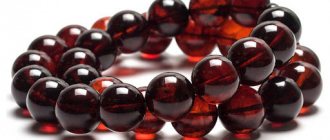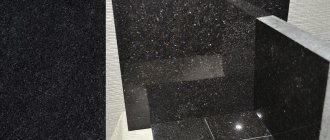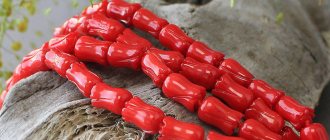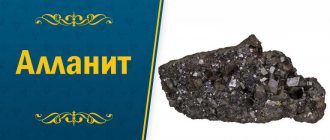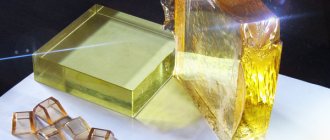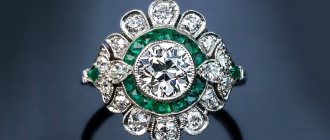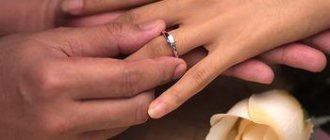CLASSIFICATION OF PRECIOUS AND PRECIOUS STONES BY VALUE
The cost of a stone is influenced not only by its size, strength, uniformity, color, but also by how rare it is and how difficult it is to obtain.
There are many classifications - both in our country and abroad. Each classification has its pros and cons. In addition to the basic principles underlying each classification, there are a number of external factors that influence its structure: fashion for stone, discovery of new deposits, market saturation, and others.
The most common in the territory of the former USSR is the classification of V. Ya. Kievlenko, proposed by him in 1973 and refined in 1983. This classification is popular both among industrialists and non-professionals.
FIRST GROUP JEWELRY (PRECIOUS) STONES
1st order - diamond, emerald, blue sapphire, ruby.
2nd order - alexandrite, sapphire (orange, purple and green), pearl, noble black opal, noble jadeite.
3rd order - demantoid, noble spinel, noble white and fire opal, aquamarine, topaz, adularia, red tourmaline.
4th order - tourmaline (blue, green, pink and polychrome), chrysolite, zircon, beryl (yellow, golden and pink), noble spodumene, turquoise, amethyst, pyrope, almandine, chrysoprase, citrine.
Jewelry (precious) stones include minerals (mostly crystals) that are transparent, less often translucent, colorless or have a beautiful, pure and uniform color, bright shine, high hardness, and resistance to wear. The exceptions are opals, turquoise, and pearls - a mineral of organic origin and low hardness.
SECOND GROUP JEWELRY STONES
1st order - lapis lazuli, jadeite, jade, malachite, aventurine, amber-succinite, rock crystal, smoky quartz, hematite (bloodstone). 2nd order - agate, colored chalcedony, amazonite, heliotrope, rhodonite, rose quartz, opaque feldspars, obsidian, ordinary opal.
Jewelry and ornamental stones are minerals that are used both as ornamental and jewelry materials.
THIRD GROUP OPEN STONES
Jasper, written granite, petrified wood, marble onyx, leafite, obsidian, jet, jaspilite, selenite, fluorite, aventurine quartzite, agalmatolite, patterned flint, colored marble.
Ornamental stones mainly include rocks whose decorative properties are used in products with a large surface area (tens of square centimeters).
In the late seventies, the research institute developed an industrial classification of jewelry and semi-precious stones. In it, three groups are further divided into subtypes and groups according to transparency, hardness (on the Mohs scale) and other properties. This classification is used in the jewelry industry.
Rarely does anyone doubt whether an emerald or a diamond is more expensive. If you ask such a question to a person inexperienced in jewelry, he will most likely answer: “Of course, a diamond!” It is difficult to say why such injustice arose, because a diamond, although rightly considered a valuable stone of exceptional beauty, is not at all “the very thing”. There is an opinion that the marketing efforts of sellers are to blame. The jewelry market is literally flooded with diamond products. The diamond sparkles everywhere, leaving other precious gems in the shadow: sapphire, ruby and emerald. It’s as if no one will remember the latter. But let's correct this misunderstanding.
Diamonds are diamonds that have been cut. Diamond has been rightly recognized as the hardest mineral, measuring 10 on the Mohs scale. The cut is designed to give the diamond unique beauty and brilliance; after cutting, its faces begin to refract rays of light and shimmer with the bright colors of the rainbow. Of course, diamonds are expensive stones, and their cost is determined depending on the following features:
- The weight of a mineral, measured in carats. The larger the stone and the more carats it has, the more expensive it is. This characteristic is relevant not only for a diamond, but for other precious stones too.
- Color. The mineral is usually colorless, but diamonds of various shades can be found in nature. Colorless diamonds are called "white".
- Purity of the stone.
- Cutting method
A lady finds herself in a difficult situation when she finds herself in a store hoping to choose some jewelry for herself. The stones sparkle and shimmer, the price tags are confusing, the tags do not clarify anything - in general, the situation is almost hopeless. Sellers are ready, in principle, to answer any question, but what to ask is unknown. You can’t ask a nice girl: “Is that green one over there a good stone? Isn’t it a fake?”
Precious stones, transparent and hard, are rare in nature and therefore are expensive. These include diamond, natural pearl, sapphire, emerald and ruby.
However, diamond occupies a special place among them. It combines exceptional hardness, high light refraction and high gloss.
Diamond
Diamonds are made up of pure carbon atoms that exist deep underground, subjected to intense heat and pressure over billions of years.
What can it be confused with?
The greatest similarity is found in cubic zirconia (colorless zircon created by laboratory synthesis at the Physical Institute of the P.N. Lebedev Academy of Sciences). Although they are very similar in appearance, if you look closely, cubic zirconia gives less colorful highlights. Beryl, sapphire, topaz, and quartz are also passed off as diamonds.
Price
Diamonds are piece goods. A high-quality diamond weighing 1 g costs hundreds of thousands of rubles.
Tips for choosing
Let's try to understand the mineral according to the parameters indicated on the price tag.
The cost of any gemstone is made up of four factors: weight, shape, color and quality.
Weight
measured in carats (in ancient times, this word was used to describe special seeds with which the size of a pebble was compared). 1 carat is equal to 0.2 g. The price per carat increases with the weight of the diamond. A particularly sharp jump in price is observed at the 1-carat mark, when the price of identical stones weighing 0.99 carats and 1 carat differs by approximately 1.3 times, since it is believed that a “real” diamond starts at 1 carat. Depending on their weight, diamonds are divided into small (up to 0.29 carats), medium (from 0.30 to 0.99 carats) and large (more than 1 carat). If the diamond is too small, its mass is measured in “points”, which are 0.01 of the carat, that is, only 2 mg.
Form.
This is the type of cut: round, oval, etc. This determines how the stone “plays” and glows. Round shape (Kr) is the most common option. Ovals and hearts are cut less frequently and are cheaper. The cut can be simplified, with 17 facets (Kr-17) (for small stones) and complex – with 57 and 58 facets (Kr-57). Another point that influences the evaluation of a stone is the quality of the cut (symmetry, polishing, etc.), evaluated by the letters “A”, “B”, “C”, “D”, where the first one denotes the highest class.
Color.
Due to the peculiarities of the diamond formation process, only a few specimens are truly colorless stones. The more colorless a “white” diamond is, the higher its value. These rules do not apply to fancy colored diamonds. Such diamonds come in blue, pink, red, yellow, and green. They are very rare, and their cost is several times higher than the cost of “white” diamonds. Diamonds are classified into color groups from colorless with a gradual increase in saturation to yellow, brown, and gray shades. The number of color groups depends on the weight. Small Kr-17 diamonds are classified into 4 color groups (1 - colorless stones). Small Kr-57 diamonds are classified into 7 color groups (1 - colorless stones). Medium and large diamonds are classified into 9 main color groups (1 - colorless stones).
Purity.
Diamonds are classified into clarity groups depending on the presence of internal characteristics (inclusions, cracks, surface defects, the elimination of which will lead to significant weight loss), their quantity, location and color (characteristics visible through a 10x magnifying glass are taken into account). Although these shortcomings make the product unique, their presence still makes the product cheaper. The quantity depends on the weight. Thus, small Kr-17 diamonds are classified into 6 purity groups, and small Kr-57 diamonds into 9 groups. For medium and large stones there are 12 purity groups. The relationship between color and clarity is usually expressed as a fraction, with the larger the numerator and denominator, the lower the quality of the stone. For example, a diamond with a characteristic of 3/3 is considered good, but a fraction of 9/12 indicates a very low quality of the stone.
We translate from jewelry
The “coding” of a diamond’s quality looks something like this: Kr57A-0.47-3/5. Translation from jewelry:
- Kr57A - has a round cut shape (Kr) with 57 facets (57) of very high quality (A).
- 0.47 - the second number indicates the size of the stone. Weighs 0.47 carats, that is, medium in weight.
- 3 - the penultimate number on the label indicates the degree to which the color of the stone differs from white (transparent).
- 5 - the last digit indicates the class of “purity” or quality of the stone. Our sample has few foreign inclusions.
Summary
An ideal diamond weighs from 1 carat, round grade A cut with 57 facets, colorless, pink or blue, with a color/quality ratio of 1/1 to 3/3.
Pearl
Natural pearls are formed in the body of an oyster if some foreign body, such as a grain of sand, gets there. The mollusk tries to get rid of it by secreting nacre, which envelops the alien, trying to neutralize its activity. The longer the pearl remains in the oyster's body, the thicker the layer of nacre around it will be. This creates a beautiful shiny gemstone - a pearl.
Natural pearls belong to the category of the rarest and most expensive precious stones. Pearls are not processed by jewelers - they are used in their original form.
What can be confused with
Nowadays, most pearls sold in stores are cultured specimens, grown with the help of humans (a bead is placed in an oyster, after which the pearl formation process continues in the same way as in nature). It is believed that cultured pearls have the same properties as natural pearls. The main difference between natural and cultured pearls is that cultured pearls are harvested much earlier than natural ones, and therefore the layer of nacre on them is very thin.
Price
The price of the final product will depend on the color, growing conditions (sea or river water), thickness of the pearlescent layer, surface gloss, size and shape. As the size increases, the price increases unevenly: a 9 mm pearl costs twice as much as an 8.5 mm pearl. At the same time, river pearls are traditionally valued less than sea pearls. There are no perfectly round pearls, so rounded ones are valued more than crooked ones, but non-standard specimens shaped like snails, for example, are also not cheap. Naturally colored pearls cost more than white pearls, while artificially colored pearls cost less. White and pink pearls are most valued, followed by gold (champagne) and black (Tahitian).
Color
Pale pink, silver, yellowish, light green, white, black, rose red. Sizes range from microscopic to a pigeon egg.
Tips for choosing
If you decide to purchase pearls, compare the quality of what is offered in stores. Take a closer look at the product as a whole: the shine is good, but the roundness is not important; shine and color are normal, but the surface is uneven; The shape is good, but there is no harmony among the pearls in the string.
Place the pearls on your neck or face and make sure their color matches your skin and hair color. Ask if the color is natural. Freshwater pearls are easy to distinguish from sea pearls: they are small and shaped like crooked pearl grains.
Summary
The ideal pearl is natural, marine, shiny and smooth to the touch, without potholes or depressions, round in shape, large in size, white, pink or gold in color.
Sapphire
Sapphire is known in the mineral world as corundum, whose crystal structure is composed of aluminum oxide. On the hardness scale, sapphire is the hardest gemstone after diamond.
Color
Rare stones of rich cornflower blue color are considered the most valuable. More often there are simply blue, green, yellow, white, pink and brown stones.
What can be confused with
Often the role of sapphire is painted cubic zirconia.
Tips for choosing
The origin of a sapphire greatly influences its value. The homeland of the best sapphires is Kashmir. The color of these stones is cornflower blue. In addition, Kashmir sapphires retain color under artificial light, which is rare for this crystal.
Price
Natural sapphires are very rare and expensive. The purer the blue color of natural sapphire, the higher the price. Darker or paler stones have less value. The price is also affected by the brightness and cut of the stone and the carat weight. The best quality sapphire is one whose purity is visible to the eye, and some inclusions are detectable under a magnifying glass. Sapphires weighing up to 2 carats are more common, but stones from 5 to 10 carats are also found.
However, a gemological3 certificate confirming that the mineral was mined in Kashmir does not yet guarantee its high quality. Burmese sapphires can also be of excellent quality. Sapphires from Sri Lanka are usually paler. The darkest and therefore cheapest sapphires are mined in Australia.
Summary
It is better to look for a sapphire from Kashmir, pure cornflower blue in color, with a good cut, weighing several carats, the inclusions of which should not be visible to the naked eye.
Emerald
Emerald is one of the most revered and expensive gemstones. The stone belongs to the beryllium genus, whose crystal structure consists of aluminum and beryllium. Unlike other green stones, it retains its color under artificial light.
Most natural emeralds have cracks and internal defects visible to the eye, and uneven coloring.
Price
The brighter the green, the higher the cost. Unlike a diamond, a beautifully colored emerald does not lose much in value if it contains inclusions. Natural emeralds of the highest quality weighing more than 2 carats are very rare and very expensive.
What can be confused with
A stone that is too pale in color may not be an emerald, but ordinary beryl or inexpensive fluorite. You can distinguish natural emeralds from synthetic ones based on the fact that most natural emeralds are imperfect, have cracks, and are opaque in places. Perfect dark green and perfectly transparent emeralds will most likely turn out to be high-quality synthetics.
Color
There are five types of emeralds: dark green, normal green, medium green, light green, light green. The most valuable are emeralds, the color of which is close to the color of dill.
Tips for choosing
It is good that the emerald passes the examination of a gemological laboratory.
When purchasing, give preference, if possible, to a larger stone; all its play is most noticeable in it.
Summary
It is most pleasant to own a stone of 1 carat or more, always with inclusions that will guarantee its authenticity. The cut should be neat, the edges without jagged edges or roughness. The color is rich green, close to the color of dill. A conclusion from a gemological laboratory would also be useful.
Ruby
Ruby is known in the mineral world as corundum, whose crystal structure is composed of aluminum oxide. After diamond, it is the hardest stone. Most natural rubies have internal defects.
Color
Its color varies from red to brown. The most valuable colors are “pigeon blood” - pure red with a slight purple tint.
Price
Like other precious stones, the price is determined based on the richness and beauty of the color, the degree of purity and the absence of defects. Typically, the quality of a ruby can be determined by eye, and inclusions can be examined under low magnification with a magnifying glass. Rubies under 2 carats are more common, while stones over 5 carats are a scarce commodity. And rubies of the highest quality are rare, regardless of their size. The most expensive rubies are those mined in Upper Burma; they have a characteristic “pigeon’s blood” hue. A 5-carat Burmese ruby can cost ten times more than a ruby of the same quality from Thailand.
What can be confused with
Almost all red stones in our jewelry are synthetic corundum.
Tips for choosing
Don't limit yourself to inspecting the stone under artificial light. In daylight, only the stone from Burma seems to be illuminated from within, flickering like a hot coal. Stones mined in Thailand, as a rule, cannot boast of such “fire”. Rubies from Sri Lanka will appear just pale pink in the light of a lamp.
Summary
The most successful investment seems to be in a Burmese ruby of a rich “pigeon’s blood” color, weighing from 1 carat, class A cut, with inclusions visible only with a magnifying glass.
Cannot be exchanged!
When purchasing products with stones in stores, be careful, because jewelry of good quality cannot be returned or exchanged.
- The main rule is that you should buy jewelry in a well-known “name” store.
- If you are not confident in your knowledge, do not neglect the help of a knowledgeable person, be it a relative, gemologist or jeweler.
- First of all, it is worth examining the hallmark of the assay office on the metal part of the product through a magnifying glass. If there is no such mark, then the jewelry is “left-handed” or was smuggled into Russia.
- In addition, each piece of jewelry must be equipped with a special sealed tag. It indicates the name of the manufacturer/seller, name of the metal, sample, weight, price per gram; if there are inserts, then their characteristics and weight. If this tag is present, if after purchasing the jewelry it is discovered that the declared qualities do not correspond to the real ones, the buyer has the opportunity to go to court, citing the Law “On the Protection of Consumer Rights”.
- Find out if the stone comes with a certificate (usually expensive minerals). It repeats information from the tag about the characteristics of the diamond. It also contains a detailed sketch of the stone indicating all inclusions, chips, and cracks. Such a document guarantees the authenticity of the characteristics of the stone.
- After the purchase, keep the sales and cash receipts, the tag and the cord with the seal. The sales receipt must indicate the sample of precious metals, the name, quantity and weight of the stones included in the product. Otherwise, after discovering defects in the product, you will not be able to make a claim.
- When purchasing pearl products, you need to know how it was produced. If the seller claims that the pearls are natural, demand that they provide you with an identification certificate compiled by a laboratory. No certificate? Perhaps you are looking at cultured pearls, which should cost much less than their natural counterpart.
Is topaz semi-precious or precious stone? This issue is not at all difficult to understand, but why then did the confusion arise? It appeared because the stone has excellent characteristics, it is in demand, and it is very expensive. It is for this reason that disputes about whether topaz belongs to one or another group of minerals have not subsided to this day, and in disputes, as we know, the truth is born.
Natural blue topaz
Description, characteristics and photos of topaz
The well-known name of topaz could arise from two completely different versions:
- From Sanskrit its name sounds like “flame, fire, heat.” Most likely, initially people discovered only stones in golden, orange, and red tones. Even today everyone knows what its name means and is translated as fiery.
- According to another version, it was named after the island of Topazios, which is located in the Red Sea. The historian of Ancient Rome Pliny the Elder claimed that it was there that gemstones were mined. Other sources claim that it was named topaz by sailors who were shipwrecked near the island.
Interesting specimens are kept in the St. Petersburg Museum (10 kg crystal) and in Brazil, it is also called Brazilian - these are gems weighing 31-50 kg. Also popular and no less outstanding are Swiss and London topazes.
You can find out what the stone looks like by looking at the pictures:
Physical properties
The crystal has high hardness levels - 8 on the Mohs scale, glassy luster, perfect cleavage and conchoidal fracture. The density of the gem is 3.49-3.57 g/cm3.
Place of Birth
Today, several countries are engaged in topaz mining. The largest deposits of this stone are located in the following countries:
- Brazil, where high-quality stones are mined, is distinguished by its deep color and large size. Blue and light blue topazes are called Brazilian sapphires.
- Russia, on the territory of our country there is one of the largest deposits of topaz, it is located in the Urals. In these places it is possible to find stones of a golden and yellow hue.
- Madagascar, where large gems are mined, are distinguished by their quality and are quite expensive.
In Brazil, they managed to find a stone weighing about 1.5 kg, it was called “Mirabella”; the topaz was distinguished by its blue color, which was comparable only to the beauty of the sky.
“Mirabella” is unique, but it is still inferior in weight to topaz, which was found on the territory of Ukraine back in the days of the USSR. The weight of the mined crystal was about 120 kilograms. The topaz was the color of white wine.
Where is topaz mined?
Topaz deposits have been found all over the planet. The largest supplier is Brazil, where gems of any color are mined, including the rarest (blue, red, imperial). In Russia it is found in the Urals and Transbaikalia.
Germany is the largest European supplier. Colorless, golden, golden stones are mined here. They are called Saxon diamonds after the Schneckestein mine (Saxon Vosges). Large deposits have also been discovered in Sri Lanka.
Sapphire as another diamond competitor
Sapphire, like ruby, is a variety of the corundum family. But, unlike ruby, it is not so rare, it has many deposits, and is found at a relatively shallow depth.
Although this variety of deep blue mineral is common, sapphires from several deposits are most valued for their quality and beauty:
- Kashmir deposit. The most valuable sapphires are mined in the Indian state of Kashmir. Crystal mining has been going on in these lands for more than two hundred years. Stones quarried in Kashmir are characterized by a deep blue color with a violet or purple tint.
- Deposits of Sri Lanka. In Ceylon, two types of gems are mined, which are in great demand, along with Indian ones. The first type of crystal is called Padparadscha and has a reflection of pink and orange hues. And in a deposit near the city of Ratnapura, extremely rare sapphires with a blue glow are mined, which have received the secret name “Ceylon color”.
- Nowadays, the largest sapphires are mined in Thai deposits. At one time, it was here that the largest precious gem on the planet was found - a 958-carat sapphire. Thai stones are characterized by dark blue and dark green shades, while there are unique chameleon stones that shine in different shades, depending on the angle of the light rays.
Sapphire
Precious or semi-precious – what kind of stone is it?
There are various varieties of topaz. Natural stone is classified as semi-precious stone of the second level. In terms of hardness, it is comparable to corundum and diamond, and has a high level of transparency. Due to its density, it is classified as a “heavyweight” stone. What color is real topaz?
- colorless;
- lilac;
- violet;
- red;
- gold;
- citric;
- yellow;
- blue;
- pink;
- black;
- blue.
The shade of the crystal depends on the presence of various impurities of iron and other substances. Chemical formula – Al[SiO4](F,OH)2.
Aquamarine
According to a legend that has come to us since the times of Ancient Rome and Ancient Greece, aquamarine is the talisman of Poseidon (Neptune) - the supreme god of the seas, one of the three main gods of Olympus. This formidable ruler of the water element once fell in love with an earthly girl and in order to win her heart, he gave her one gift - a stone created in the depths of the sea - aquamarine, which was supposed to forever link his heart with the heart of his beloved. And since then, aquamarine has been considered the guardian of love and tender feelings.
This stone has a beneficial effect on the psycho-emotional sphere. It is an indicator of a person’s state of mind and its stabilizer. This stone has a clear blue color only when peace and tranquility reign in the soul of its owner.
It protects against deception and various dangers that can befall its owner, preserves his peace of mind and balance, and enhances spirituality. It also strengthens friendships and family relationships and gives its owner wisdom and prudence.
Earrings with aquamarine
Types of topaz
The most common are yellow colored gemstones. Expensive specimens include a pink gem from Pakistan. An interesting mineral is a stone wrapped in a gray film “shirt”. It is distinguished by impurities and crystal lattice defects. All topazes have a clear color, without haze or nebula.
The table shows the most common types of mineral:
| Variety | Description |
| Colorless | They are also called white, silver. This is a common type. Its deposits are located shallow, which explains the lack of color. They are often used in the manufacture of colored topaz. This type is one of the popular diamond competitors. Masters skillfully transfer the versatility, depth, purity, and iridescent color of diamonds onto topaz. It is often passed off as a more expensive crystal. |
| Light blue or blue | This is a natural and refined gem. It is also called moon topaz. In jewelry stores you can find three types of minerals: 1. Sky Blue is an inexpensive variety of light stones. 2. Swiss Blue (Swiss) - a dark, expensive specimen. An ideal assistant for women - it is believed that natural stone helps slow down the aging of the body. 3. London Blue - dark blue, blue. The density of color affects the cost - light ones are cheaper than dark ones. Special methods are used to cut it. Especially popular in European countries. They are often confused with sapphires. Dark stones are extremely rare in nature. Therefore, to meet the needs, they resort to irradiation and heat treatment of colorless stones. To do this, they need to be kept in special conditions for several months, until the radiation level decreases to safe levels. |
| Yellow | The most common miners, which are distinguished by yellow, brown, golden-green colors. Relatively inexpensive, they are especially popular among magicians. Jewelry with such a stone is often given as a gift to rulers. India was the first to use crystal for medicinal purposes. The most expensive gems are rich yellow, fiery in color, turning into blue. |
| Pink | It is one of the most expensive gems. The value of such topaz is due to the impossibility of making fakes. Today there are no technologies that will make the stone both red and transparent. |
| Green | One of the most sought after crystals among collectors. The atypical color is obtained due to the presence of aluminum silicate and radiation. Such specimens have a velvet tint. They are used exclusively for luxury jewelry used in evening looks. They can also be found in the crowns of various rulers. The presence of haze in this crystal indicates its artificial origin. |
| "Mystic" | Due to the characteristics of the crystal lattice, the stone contains various shades obtained from light refraction. It becomes rainbow only after processing. To do this, the colorless stone is irradiated and coated with a layer of gold and titanium. The result is an iridescence that can be seen in any light. “Mystic” is distinguished by the brilliance inherent in a diamond. |
| Smoky | It is a type of quartz (rauchtopaz). It is because of the smoky shade that it is classified as a topaz. It gained popularity thanks to its unique gray-brown color scheme. Looks interesting with gold, for example, in a ring. |
| Black | The rarest variety. It is especially popular among magicians. It has powerful energy potential. For example, a strong amulet against dark forces is a topaz bracelet. |
| Royal | Also called imperial. There is no color standard. In jewelry, crystals of orange-brown tones are considered the standard. Looks great in silver. |
Why is it called precious?
The topaz gemstone has been known to humanity for quite some time. Certain characteristics of the gem, or rather its hardness, became the reason why crowns and symbols of power were encrusted with topazes.
Kings and monarchs loved crystals of various shades, assigning magical properties to them. Since the range of colors of topaz is amazing, it had many properties.
If you delve into the problem, you can immediately encounter problems, since in some countries topaz is classified as a precious stone, and in others - as a semi-precious stone.
In our country, such issues are resolved through legislation, but in some countries the laws are different. For this reason, topaz is regarded as a precious mineral, and the reason for this is not only the characteristics of the stone, but also its cost.
The rarest and most expensive are blue topazes; there are very few such stones left in nature. Most of the deposits that are familiar to humanity have almost completely exhausted themselves. The cost of such gems is very high.
But the technologies that people have owned since ancient times help combat the shortage. Minerals that are not brightly colored must be processed; they go through a refining procedure. The crystals are heated and exposed to radiation. As a result of processing, minerals become bright and acquire the desired shade.
It is difficult to recognize a substitution, since at its core, a crystal that has gone through the refining procedure is the same topaz that meets all the requirements. Only a bright color or shade can reveal the synthetic origin of a mineral, because those stones that are found in the bowels of the earth are distinguished by a soft color.
In our country, topaz is a semi-precious stone; it is not included in the list of precious stones for the reason that at the moment there are quite a lot of deposits in the world where topazes of various colors are mined.
Which stone is more expensive: amethyst or topaz?
It is impossible to say exactly which of these stones is more expensive. Although topaz is classified as semi-precious, there are specimens that are even more expensive than diamonds. Amethysts are a type of quartz - their cost per 1 carat varies between $25, but there are also more expensive specimens. Products made from topaz, for example, earrings and rings, are often used as amulets.
How to spot a fake
This is an extremely popular crystal, which means it is often counterfeited. Imitations of rich colors are often found because they are more expensive. Before purchasing, it is important to ask the seller for a quality certificate. It is important to know what the marking on the crystal tag means and compare it with the certificate. If you don’t know what precious and semi-precious stones are or how to distinguish them, then it’s better to go shopping with a specialist. It will help you acquire a truly natural gem.
There are several ways to determine the original at home:
- Rub the stone on the wool. The naturalness is indicated by the fact that hairs and ash stick to the mineral. Some people may experience a tingling sensation in their fingers when touching topaz.
- Topaz easily scratches quartz and crystal, but only a diamond can damage it.
- The natural gem is cold – it warms up in your hands after a while.
- If you put a natural stone in a solution of methylene iodide, it will sink, while an artificial stone will float.
- Natural gems come in only delicate tones. Poisonous, bright colors are a sign of a natural, but irradiated gem. This must be indicated in the certificate for the stone.
- Natural crystals contain various defects; counterfeit crystals always have a smooth surface.
It is important to take into account that such methods allow you to make only a preliminary, biased assessment. Only a professional can determine authenticity.
Varieties of pomegranate
The natural forms of pomegranate are striking in their diversity. It’s not often that you see a stone found in nature not only in the form of the usual rhombuses, triangles or trapezoids. There are crystals of a very complex structure with 38, 48 and even 72 faces. The most popular types of garnet among jewelers are scarlet pyrope and almandine, distinguished by their bright red, seemingly radiant color.
Moreover, pyropes were most valued in ancient times. They were mined mainly in the Czech Republic and were an indicator of refined taste and prosperity for the nobility. Nowadays, pyropes are very rare and cannot cost less than $200 per carat. The market is filled with synthetically created stones.
Nowadays, thanks to the large number of explored deposits, the primacy has gone to almandines. These are quite large stones. And their price is quite affordable.
Quite rare, and therefore expensive and most valuable are demantoids and tsavorites. Only a specialist can distinguish the shine of their facets from the shine of emeralds. But their sizes are small. The largest stones weigh only 0.4 g (2 carats). Demantoids can have unique shades: pistachio, olive, soft green.
These stones, which have high levels of purity and transparency, are not precious, but can nevertheless be measured in carats and be quite expensive.
The most expensive and rare type of garnet is majorite, a transparent stone with a radiant purple hue.
This king of garnets can originate either from the impact of a meteorite, or from the pressure present at a depth of at least 400 m. Majorites are found very rarely. They were last discovered in France in 2004, cut and sold for $2,400 per carat. And the most expensive cut majorite weighs almost 4 carats. Its cost is estimated at more than $8 million. How can we call this variety of garnet a semi-precious stone?
However, if a person can explore Mars or at least the Moon, majorite will cease to be an expensive curiosity, since the conditions there are conducive to the formation of this type of mineral (majorite, in particular).
Among the stones most used by jewelers and master carvers are:
- pink rhodoliths;
- greenish urovites;
- orange-brown hessonites;
- light green grossoirs;
- black melanitis;
- multi-colored spessartines, which can be yellowish or pinkish-red.
Properties and meaning of the gem
Each type of mineral has its own unique healing and magical properties. Therefore, before using a stone, it is important to familiarize yourself with all its features.
Medicinal properties
The table will help you understand the abilities of the stone.
| Variety | Healing properties |
| Colorless | Has a beneficial effect on the immune and nervous systems. Helps with hormonal and metabolic disorders. |
| Yellow | Helps in the treatment of diseases of the respiratory system and oral cavity. Improves the functioning of the gastrointestinal tract, normalizes the psycho-emotional state. Suitable for overly emotional people. |
| Blue | Has a beneficial effect on the thyroid gland. Helps in the treatment of diseases of the reproductive system in women, normalizes blood pressure. |
| Smoky | Helps with sleep disorders, eliminates stress. Like other topazes, it improves appetite, so if you need to control your diet, it is better to be careful when wearing it. Silver enhances the characteristics of the stone. |
Magic properties
Esotericists know what each type of topaz symbolizes. The interpretation varies depending on the color of the crystal. Each shade gives the mineral a certain energy potential.
Blue
An ideal way to find out if there is poison in a drink. If it is poisoned, the color of the stone will change. Acts as the best talisman for lovers and successful people. Strengthens kindness, compassion, determination. Helps in solving complex issues. In some cases it can lead to divorce. Sailors believe that such topaz helps calm storms. The stone will also help you find spiritual balance and tranquility.
Yellow
Attracts wealth and helps to recognize lies. An ideal stone for hot-tempered and flighty people, as it gives peace and tranquility.
Green
Absorbs negative energy from the owner’s environment. It will help people who are faced with endless and causeless anxiety.
Colorless
Suitable for absent-minded people who cannot direct their energy on their own or express themselves correctly. Considered a strong protector against dark magic.
Pink and red
Creates a protective aura around the owner and gives confidence in any undertaking. It is considered the best talisman for single women. The owner of the pink mineral will always be held up as an example, which is important to consider.
Smoky
Makes it easier to enter into meditation. Helps neutralize aggression of the owner and others. Acts as an ideal assistant when looking for profitable work. Does not tolerate people with negative thoughts!
"Mystic"
Best other yogi. It is used as a means of connecting the mind and cosmic energy. Helps to develop clairvoyance skills.
Black
The owner of such topaz will receive developed intuition, he will be able to foresee a conspiracy. Considered the patron saint of businessmen and travelers. Its power is controlled by the moon, so during full moon periods the energy potential of black topaz is maximum.
Topaz
In nature, there are several types of topaz of different colors. But the most popular is sky blue topaz. This translucent cold stone simply fascinates with its crystal-clear shine.
But in addition to its excellent appearance, topaz is also valued for its properties. As a talisman, topaz brings success and material wealth to its owner, imparts honesty and objectivity. And besides, it will help to achieve favor and good attitude from others.
He is a strong protector of his owner. It protects him from the “evil eye” and other negative influences.
This stone calms a person’s nervous system, relaxes him and is even able to put him into a state of some kind of trance (it’s not for nothing that this stone is often used for meditation). It helps its owner let go of unnecessary thoughts, clear and refresh the mind.
Topaz is extremely useful for stress, nervous breakdowns and mental disorders, helps with insomnia and relieves fears and phobias. It balances a person’s feelings and emotions, directing them in a calmer and more correct direction.
Collection: jewelry with topaz
Gold earrings with blue topaz and cubic zirconia
Which zodiac sign suits
Topaz affects all zodiac signs differently. It often has positive effects, but in some cases it can be dangerous. Therefore, it is important to study in more detail who he is suitable for according to the horoscope:
- For Aries it is an amulet of wisdom. It emphasizes their strengths, makes them resilient and fair.
- Taurus with topaz gain spiritual development and courage. This sign should not wear such a talisman regularly - it can harm family relationships.
- Topaz is just perfect for Gemini. He pacifies their fickle, flighty disposition. Helps you overcome health problems and teaches you to enjoy life and enjoy every little thing.
- It will protect Cancers from rash, impulsive actions. He also acts as a good protector for this sign.
- For Virgo, this is a great way to balance an overly pedantic character. Topaz will reveal hidden talents in representatives of this sign.
- Massive topazes are ideal for Leo. They emphasize their aristocratic noble nature.
- With the help of topaz, Libra will improve relationships with loved ones and make new friends.
- For Scorpio, as well as Gemini, this is an ideal crystal in terms of compatibility. It will help you find inner harmony and make a person liberated.
- Sagittarius people need to wear topaz regularly. He will regulate their chaotic disposition, help them find peace and answers to all their questions.
- For Capricorns, topaz reveals sexuality and suppresses negative thoughts.
- For Aquarius, the crystal acts as a powerful protection against the evil eye and damage.
- Pisces under the influence of the gem will become more sociable and open. Therefore, caution should be exercised when wearing such a talisman.
Sapphire
Sapphire is a stone of a rich, deep dark blue color. It can rightfully be called one of the most noble and beautiful stones.
Its properties are somewhat similar to topaz. It is able to protect a person’s soul, helps him find inner comfort, confidence and tranquility and, like topaz, is used in meditation. Sapphire protects its owner from betrayal and fear, tames anger and explosive negative emotions.
It is also considered a stone of fidelity and true, pure love. He protects relationships and family hearth.
In addition, the owner of a sapphire will receive a real muse in the person of this stone, since sapphire reveals a person’s creative potential and develops his abilities in this area. It helps awaken creative, extraordinary thinking and imagination, gives clarity to thoughts, and strengthens memory.
According to ancient Indian legend, sapphires were presented to people by the will of heaven by the supreme god Brahma, who poured the drink of immortality (which the gods drink at their feasts) - amrita - throughout the world. And these splashes that fell to the ground turned into sapphires. It is believed that people saw the reflection of Paradise in these shimmering crystals.
Collection: jewelry with sapphires
Gold ring with blue sapphires and diamonds
How to restore shine to topaz - care rules
It is important not only to know whether topaz suits your horoscope, but also how to properly care for it.
Care
When caring for a gem, it is important to follow the following rules:
- Do not expose the stone to household chemicals.
- Spraying of “mystic” topaz is sensitive to reagents.
- Just one blow is enough for the topaz to break.
- To prevent the stone from changing color, it is better to wear jewelry with it after the makeup and hair have been done.
- Restoring the color of a faded crystal is quite simple - you need to put it in a closed box, wrapping it in thick cloth.
- You can clean the stone with soapy water and a soft brush. Dry naturally.
- To neutralize negative energy, place the stone in ice water overnight and then drain it.
Wearing
Topaz is ideal for evening looks. If they are exposed to direct sunlight for a long time, they begin to change color and fade. When wearing topaz, consider some features:
- The ring should be worn on the index finger of the working hand - it protects women from infertility, and increases potency for men.
- Pendants and pendants lift your spirits and help in solving difficult issues.
- With gold, topaz is ideal for adults, especially when looking for inspiration.
Suitable for setting topaz:
- yellow gold;
- silver;
- cupronickel
